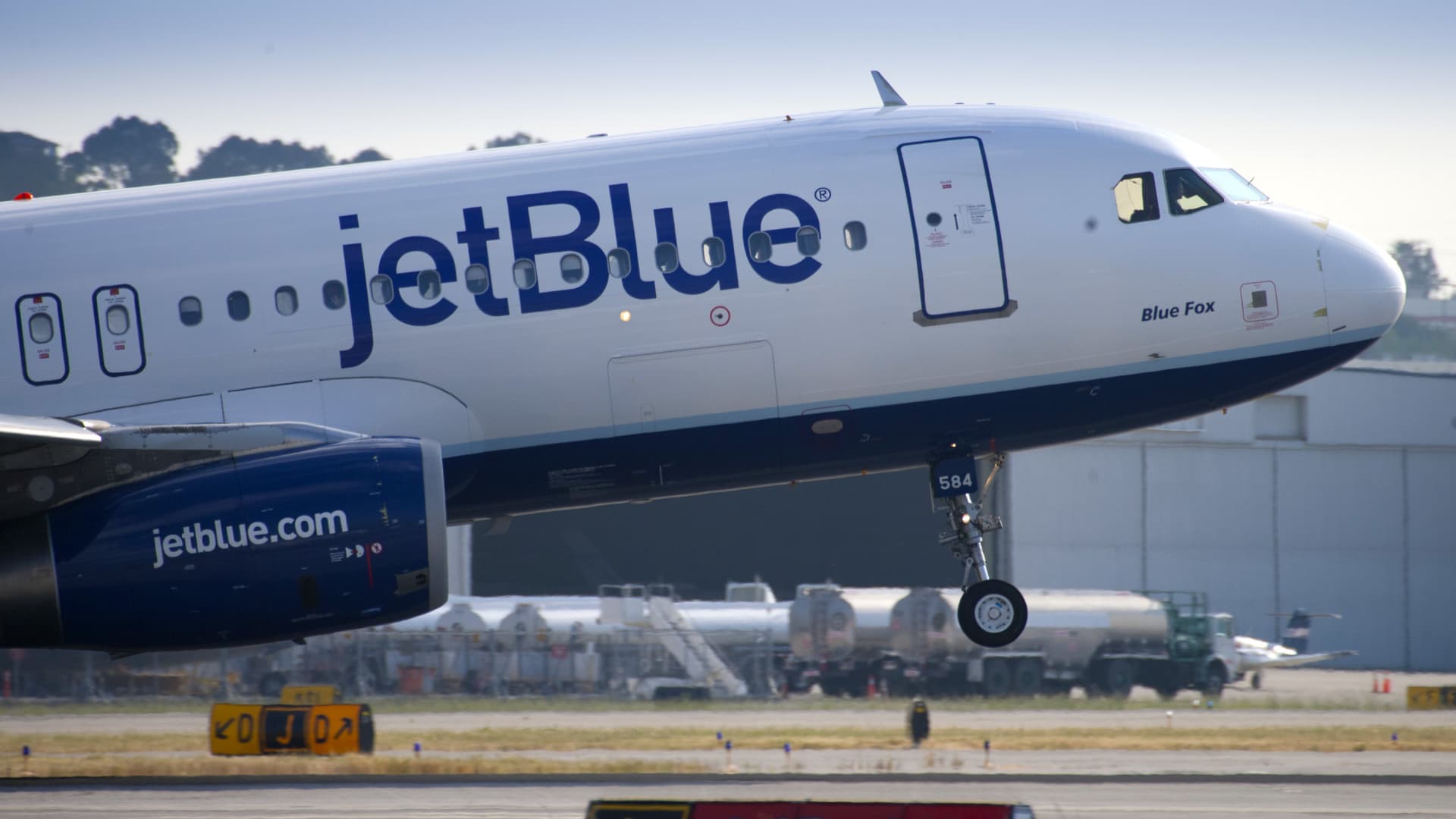[ad_1]
A Jet Blue aircraft takes off from Long Beach Airport in Long Beach, CA.
Tim Rue | Bloomberg | Getty Images
JetBlue Airways slashed its 2023 outlook and warned of a potential loss in the current quarter as travelers opt for destinations abroad and the carrier grapples with the end of its partnership with American Airlines in the Northeast.
JetBlue forecast adjusted earnings per share for the full year ranging from 5 cents to 40 cents, down from an earlier estimate for per-share earnings of as much as $1.
The New York-based carrier said it could post an adjusted loss of as much as 20 cents for the third quarter with revenue down 4% to 8% from the same period last year.
The airline’s shares tumbled more than 8% on Tuesday after reporting second-quarter results.
Here’s how the company performed in the period, compared with Wall Street expectations, according to Refinitiv consensus estimates:
- Adjusted earnings per share: 45 cents vs. 44 cents expected
- Revenue: $2.61 billion vs. $2.61 billion expected
JetBlue reported net income of $138 million for the second quarter, or 41 cents a share, compared with a net loss of $188 million, or 58 cents a share, a year earlier. Revenue rose 6.7% to $2.61 billion, roughly in line with analyst estimates.
Airline executives this earnings season have noted a shift in demand toward long-haul international travel, which was hurt during the Covid pandemic.
That change along with increased capacity is driving down domestic airfare, as travelers opt for new destinations abroad, they said on recent earnings calls.
JetBlue’s COO, Joanna Geraghty, said the shift is “pressuring demand for domestic travel during the peak summer travel period.
“While we remain on track to deliver a profitable year and record revenue performance, we are taking action, including redeploying capacity to mitigate these current challenges and improve margins,” she said in an earnings release.
Other challenges include the end of JetBlue’s alliance with American Airlines at New York-area airports and Boston after a judge ruled it anti-competitive and ordered them to scrap it. The partnership allowed the carriers to share passengers and revenue and coordinate routes. The two airlines stopped selling seats on each other’s flights late last month.
Geraghty also cited air traffic constraints in the Northeast. Both JetBlue and United Airlines said a shortage of air traffic controllers exacerbated flight disruptions resulting from thunderstorms in late June and July.
About 46% of JetBlue’s flights arrived late from July 1 through July 30, according to FlightAware, with an average delay time of 85 minutes, higher than the national average of 28% of flights delayed at an average of 60 minutes.
“JetBlue is caught in the cross-hairs of slowing domestic leisure air travel demand, operating in some of the most constrained U.S. airports, and idiosyncratic distractions” like the end of its American partnership and its plan to buy budget carrier Spirit Airlines, said Cowen airline analyst Helane Becker in a note.
The airline said that its outlook did not include the impact from accelerated inspections on some Pratt & Whitney engines. The manufacturer’s parent, RTX, formerly called Raytheon Technologies, disclosed manufacturing flaws on those engines last week.
Later on Tuesday, budget carrier Frontier Airlines forecast adjusted, pretax margins of 4% to 7% for the third quarter and of 4% to 6% for the full year.
The airline said those forecasts include cancellations because of weather, slightly higher fuel prices, and a “moderation in average fares caused primarily by a shift in demand to competing long-haul international destinations.”
[ad_2]
Source link





